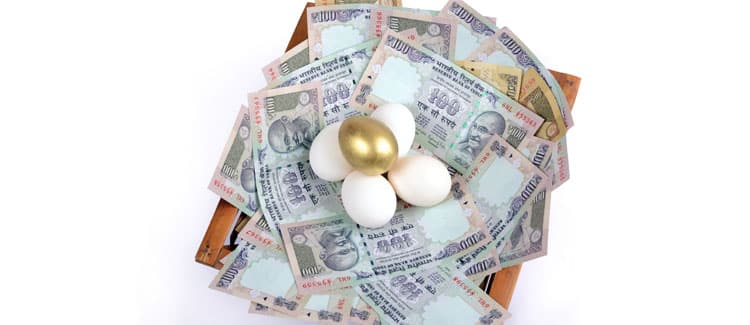Tax on 12 Lakh Income
The Indian income tax system offers taxpayers two options—the Old Tax Regime with multiple deductions and exemptions, and the New Tax Regime with lower tax rates but limited deductions. For FY 2025-26, significant changes, including increased rebate limits and revised slabs, have impacted both regimes. Understanding these differences is essential to choosing the right approach for optimizing your tax liability on incomes up to ₹12 lakh and beyond.
Old Vs. New Tax Slabs as per Union Budget 2025
A quick comparison of old tax slabs and new tax slabs as per the latest Union Budget 2025 is as follows:
Latest Income Tax Slabs (FY 2024-25)
1. Old Tax Regime
| Income Slab (₹) | Tax Rate |
| Up to 2,50,000 | Nil |
| 2,50,001 – 5,00,000 | 5% |
| 5,00,001 – 10,00,000 | 20% |
| Above 10,00,000 | 30% |
- Standard Deduction: ₹50,000
2. New Tax Regime
| Income Slab (₹) | Tax Rate |
| Up to 3,00,000 | Nil |
| 3,00,001 – 6,00,000 | 5% |
| 6,00,001 – 9,00,000 | 10% |
| 9,00,001 – 12,00,000 | 15% |
| 12,00,001 – 15,00,000 | 20% |
| Above 15,00,000 | 30% |
- Standard Deduction: ₹75,000 (from FY 2024-25, increased from ₹50,000)
Changes in Income Tax Structure for FY 2025-26 (AY 2026-27)
- Standard Deduction:
- ₹50,000 for old regime
- ₹75,000 for salaried individuals under the new regime
- Family Pensioners: Deduction limit increased from ₹15,000 to ₹25,000
- NPS/EPF Employer Contribution: Deduction limit raised from 10% to 14% of basic + DA (both regimes)
- Capital Gains Tax:
- Unlisted bonds/debentures: Now taxed at slab rates (no LTCG benefit)
- LTCG on listed equity: Exemption up to ₹1.25 lakh, rate is 12.5% (previously 10%)
- STCG (listed equity/business trusts): Rate increased to 20% (previously 15%)
- LTCG on other assets: 12.5% (no indexation); previously 20% with indexation
- Securities Transaction Tax (STT):
- On futures: 0.02%
- On options: 0.1%
How is ₹12 Lakh Income Tax-Free?
- The tax rebate under Section 87A has been enhanced for FY 2025-26, allowing individual taxpayers with net taxable income up to ₹12 lakh to pay zero tax under the new regime.
- For salaried employees, after accounting for the standard deduction of ₹75,000, the effective tax-free limit is ₹12.75 lakh.
- This means if your salary is ₹12 lakh or less, you owe zero income tax under the new tax regime.
- If your income is slightly above ₹12 lakh, marginal relief ensures you are not taxed disproportionately on the excess income up to ₹12.75 lakh.
Sample Tax Calculation for ₹12 Lakh Salary (New Regime)
| Description | Amount (₹) |
| Annual Gross Income | 12,00,000 |
| Less: Standard Deduction | 75,000 |
| Net Taxable Income | 11,25,000 |
Since ₹11,25,000 is below the ₹12,00,000 rebate limit (because of the enhanced Section 87A), your tax payable = ₹0.
Income Tax Exemptions under Old and New Tax Regime for FY 2025-26 (AY 2026-27)
The following table summarizes the key income tax exemptions under both tax regimes for the Financial Year 2025-26 (Assessment Year 2026-27):
| Exemption/Deduction Type | Old Tax Regime | New Tax Regime |
| Basic Exemption Limit | ₹2,50,000 | ₹4,00,000 (nil tax up to ₹4 lakh slab) |
| Standard Deduction (Salaried & Pensioners) | ₹50,000 | ₹75,000 |
| Section 80C (Investments: PPF, ELSS, LIC, etc.) | Up to ₹1,50,000 | Not allowed |
| Section 80D (Health Insurance Premium) | Up to ₹25,000 (self and family; higher for senior citizens) | Not allowed |
| House Rent Allowance (HRA) Exemption | Allowed (subject to conditions) | Not allowed |
| Leave Travel Allowance (LTA) Exemption | Allowed | Not allowed |
| Interest on Housing Loan (Self-Occupied Property) | Up to ₹2,00,000 | Not allowed |
| Section 80E (Education Loan Interest) | Allowed | Not allowed |
| Section 80TTA (Savings Account Interest) | Up to ₹10,000 | Not allowed |
| Section 80G (Donations) | Allowed (limited deduction) | Not allowed |
| NPS (Employee Self Contribution: 80CCD(1B)) | Up to ₹50,000 | Not allowed |
| NPS (Employer Contribution: 80CCD(2)) | Allowed up to 14% of salary | Allowed up to 14% of salary |
| Section 87A Rebate (Tax Rebate on Income Tax) | Available up to ₹5,00,000 taxable income | Increased rebate up to ₹12,00,000 taxable income |
| Surcharge & Cess | Applicable as per slab rates | Applicable as per slab rates |
Key Points
- Old Regime remains unchanged with its slab rates and deductions.
- New Regime offers full exemption up to ₹12 lakh (₹12.75 lakh for salaried) in FY 2025-26, a major relief for middle-income taxpayers.
- Most deductions and exemptions (like 80C, HRA, 80D) are still not available in the new regime.
- Taxpayers must file returns to claim this rebate and ensure compliance.
- For those with income above ₹12 lakh, standard rates apply as per the slab, with marginal relief up to ₹12.75 lakh.
In Conclusion
Selecting the appropriate tax regime depends on your income level and available deductions. The Old Regime benefits taxpayers with substantial investments and exemptions, while the New Regime offers simplicity and zero tax on incomes up to ₹12 lakh due to enhanced rebates. Evaluating your financial circumstances carefully can help maximize tax savings. Always consider current slab rates and deductions before making your choice for FY 2025-26.
FAQs
-
Is ₹12 lakh income completely tax-free under the new regime now?
Yes. Starting FY 2025-26, income up to ₹12 lakh is completely exempt from tax under the new regime, with ₹12.75 lakh exempt for salaried individuals due to the standard deduction. -
What if my income slightly exceeds ₹12 lakh?
Marginal relief, which is a standard deduction of Rs. 75,000, prevents disproportionate tax liability on income up to ₹12.75 lakh.
˜The insurers/plans mentioned are arranged in order of highest to lowest first year premium (sum of individual single premium and individual non-single premium) offered by Policybazaar’s insurer partners offering life insurance investment plans on our platform, as per ‘first year premium of life insurers as at 31.03.2025 report’ published by IRDAI. Policybazaar does not endorse, rate or recommend any particular insurer or insurance product offered by any insurer. For complete list of insurers in India refer to the IRDAI website www.irdai.gov.in
*All savings are provided by the insurer as per the IRDAI approved insurance plan.
^The tax benefits under Section 80C allow a deduction of up to ₹1.5 lakhs from the taxable income per year and 10(10D) tax benefits are for investments made up to ₹2.5 Lakhs/ year for policies bought after 1 Feb 2021. Tax benefits and savings are subject to changes in tax laws.
¶Long-term capital gains (LTCG) tax (12.5%) is exempted on annual premiums up to 2.5 lacs.
++Source - Google Review Rating available on:- http://bit.ly/3J20bXZ


- SIP Calculator
- Income Tax Calculator
- Compound Interest Calculator
- NPS Calculator
- Show More Calculator
Income Tax articles
Explore the popular searches and stay informed
- LIC
- Investment Plan
- Annuity Plan
- Child Plan
- Pension Plan
- ULIP Plan
- Child Investment Plan
- SIP
- LIC Calculator
- SIP Calculator
- SBI SIP
- ULIP Calculator
- Sukanya Samriddhi Yojana
- Best SIP Plans
- Retirement Planning
- SBI SIP Calculator
- HDFC SIP Calculator
- Sukanya Samriddhi Yojana Interest Rate
- NPS Interest Rate
- Deferred Annuity Plans
- SBI Annuity Deposit Scheme Calculator
- Immediate Annuity Plans
- Post Office Child Plan
- Prime Minister Schemes For Boy Child
- Government Schemes for Girl Child
- 50k Pension Per Month
- Atal Pension Yojana Calculator
- Best Pension Plan in India
- CIBIL Score
- 1 Crore Term Insurance
- Best Term Insurance Plan
- Term Insurance for Women
- Term Insurance for NRI
- Term Insurance
- Term Insurance Calculator
- Life Insurance
- Term Insurance with Return of Premium
- Whole Life Insurance
- Term Insurance vs Life Insurance
- What is Term Insurance
- Life Insurance Calculator
- 5 Crore Term Insurance
- 2 Crore Term Insurance
- 50 Lakh Term Insurance
- Term Insurance for Housewife
- Benefits of Term Insurance
- Term Insurance Terminology
- Medical Tests for Term Insurance
- Term Insurance for Self Employed
- Claim Settlement Ratio
- 10 Crore Term Insurance
- Term Insurance for Smokers
- 1.5 Crore Term Insurance
- Zero Cost Term Insurance
- FIRE Calculator

















